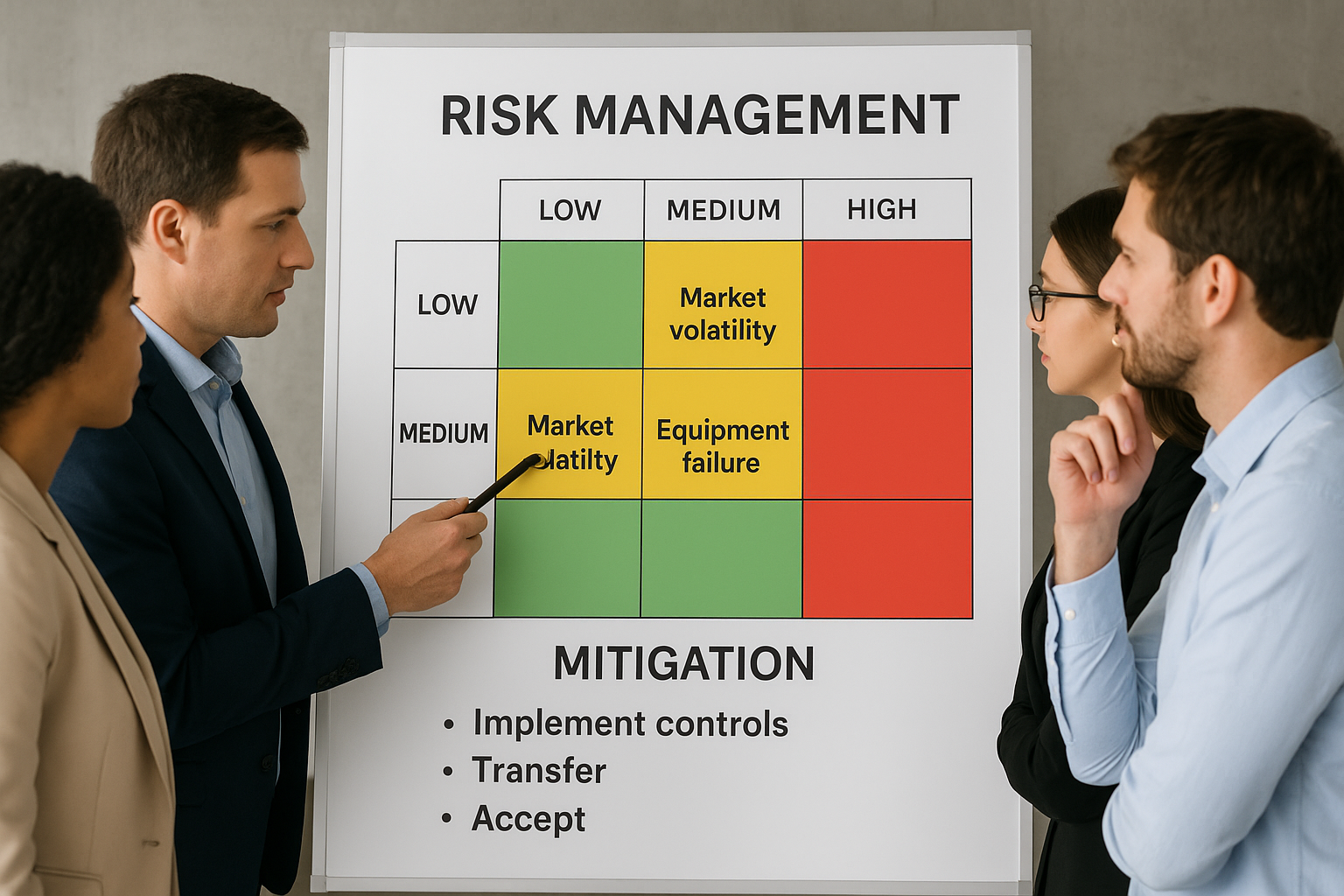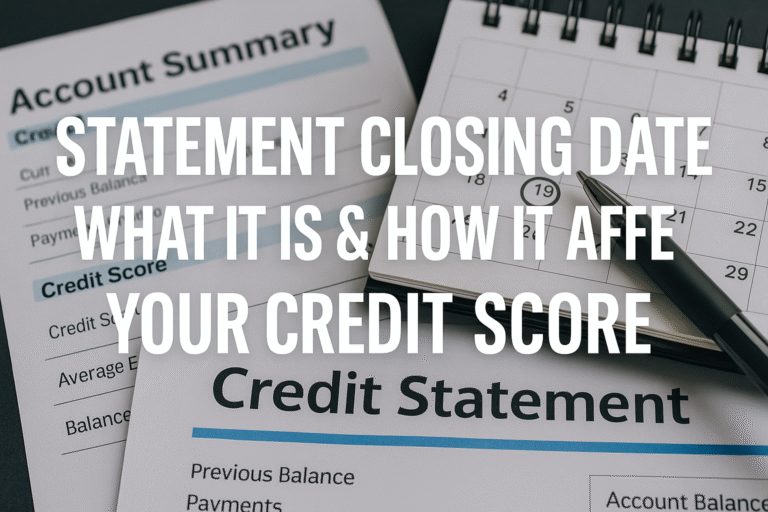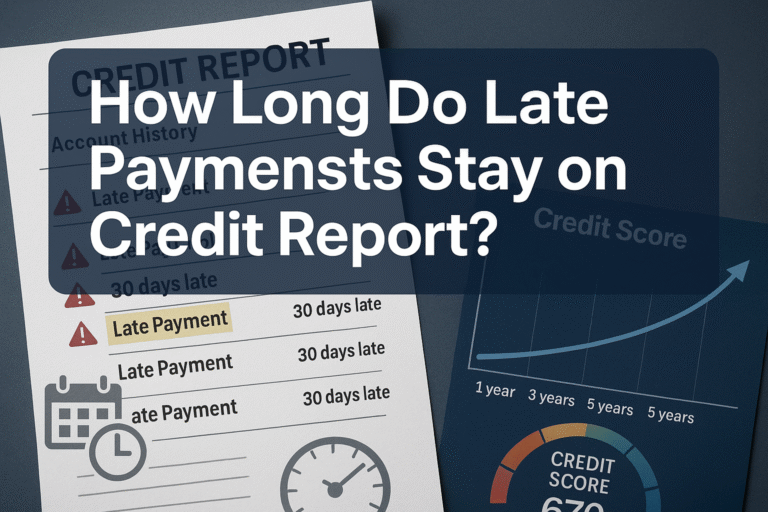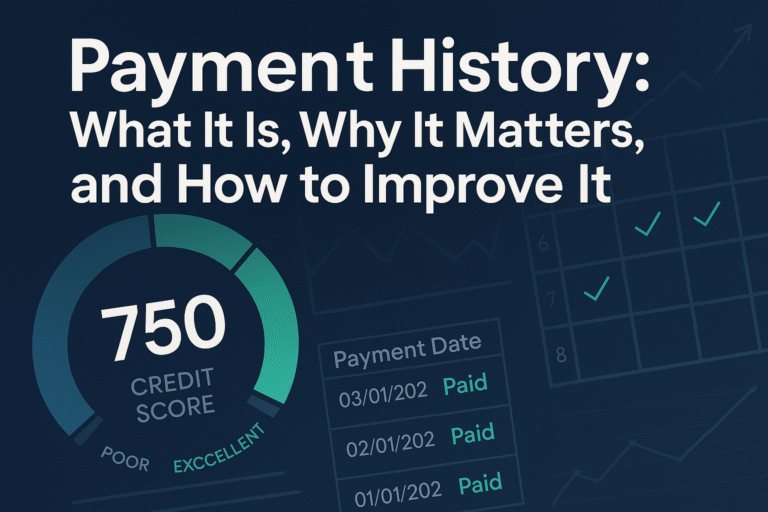Every successful project or business faces uncertainty. That uncertainty, whether it’s financial, operational, or regulatory, creates risk. The best way to prepare is with a risk management plan: a structured document that shows exactly how you’ll identify, assess, respond to, and monitor risks before they spiral into costly problems. Investopedia: Risk Management Definition
In this guide, I’ll walk you through how to build a practical risk management plan step by step. You’ll get a downloadable risk register template, real-world examples, and case studies from finance, construction, and healthcare.
By the end, you’ll have a framework you can adapt immediately, whether you’re managing a small project or overseeing enterprise operations.
What is a risk management plan?
A risk management plan (RMP) is a formal document that outlines how risks will be identified, scored, mitigated, monitored, and reported throughout the life of a project or business initiative.
Think of it as a playbook. Instead of reacting to problems as they happen, you’ve already listed likely risks, ranked them by priority, and assigned owners who know how to respond.
At its core, an RMP answers four questions:
- What risks exist?
- How serious are they?
- Who is responsible?
- How will we monitor and control them?
Competitors like LogicManager, ProjectManager, and Atlassian cover these basics well. Where they often stop short, however, is in giving readers quantitative scoring examples, industry-specific templates, and governance best practices. That’s where this article goes deeper. COSO ERM Framework
Why every project and business needs a risk management plan
Skipping risk management is like driving without insurance; you may get lucky, but one accident could be devastating. A strong risk management plan:
- Prevents surprises: By mapping risks upfront, you avoid budget overruns, missed deadlines, or compliance violations.
- Improves decisions: Using scoring methods like probability × impact turns vague worries into measurable priorities.
- Strengthens governance: Regulators, boards, and stakeholders expect documented risk processes.
- Builds resilience: Plans aligned with frameworks like ISO 31000 and the NIST Risk Management Framework (RMF) hold up under scrutiny and audits. Future Value Guide
Core components of an effective risk management plan
Every RMP looks a little different, but the most effective ones include these building blocks:
- Scope & objectives: What the plan covers (single project, business unit, or enterprise).
- Risk policy & tolerance: The level of risk you’re willing to accept.
- Roles & responsibilities: Who owns each risk, and who approves the plan.
- Methodology: How risks are identified, scored, and prioritized.
- Risk register: A living document of risks, their scores, mitigation strategies, and statuses.
- Reporting & monitoring: How risks will be tracked and communicated to stakeholders.
- Review cycle: How often the plan is revisited and updated.
Risk identification
Risks can be spotted through:
- Brainstorming and SWOT analysis
- Lessons learned from past projects
- Vendor and supply chain assessments
- Regulatory or compliance checklists
Risk assessment (with scoring example)
Most plans use a probability × impact matrix. Each risk is rated on likelihood (1–10) and impact (1–10). Multiply the two to get a risk score.
Example:
- Risk: Cybersecurity breach exposing customer data
- Probability = 4/10
- Impact = 9/10
- Risk Score = 36 (high priority)
For finance-focused teams, you can also convert impact into dollars:
Expected Monetary Value (EMV) = Probability × Monetary Impact
This gives executives a clear dollar-based picture of potential losses.
Risk response strategies
- Avoid: Change the plan to eliminate the risk.
- Mitigate: Reduce the likelihood or impact with controls.
- Transfer: Shift responsibility (insurance, outsourcing).
- Accept: Acknowledge and monitor the risk within tolerance.
The Risk Register
The risk register is the heartbeat of your plan. It records every risk, owner, score, and mitigation strategy in one place.
Here’s a simple example (download the full CSV here):
| ID | Risk | Likelihood (1–10) | Impact (1–10) | Score | Owner | Mitigation | Status | Residual Score |
|---|---|---|---|---|---|---|---|---|
| R1 | Payroll server downtime | 6 | 7 | 42 | IT Manager | Add failover + weekly backup tests | Monitoring | 12 |
| R2 | Vendor supply delays | 7 | 5 | 35 | PM | Pre-order, secondary suppliers | Mitigated | 10 |
| R3 | Finance compliance gap | 3 | 9 | 27 | Compliance Officer | Quarterly audits | Open | 8 |

3 Real-World Case Studies on Risk Management Plan
Finance (Investment firm)
- Problem: A market shock caused a 6% portfolio drawdown.
- Action: Added hedges + contingency reserve in risk plan.
- Result: Next shock saw only 1.5% loss. Cost of hedges < benefit saved.
Construction (Mid-sized contractor)
- Problem: Late vendor deliveries led to 8% budget overruns.
- Action: Introduced register + supplier diversification.
- Result: Impact reduced to 0.5% in the next project.
Healthcare (Clinic)
- Problem: HIPAA training gap raises breach risk.
- Action: Added staff training + incident playbook to plan.
- Result: Response time cut from 48 hours → 4 hours.
These stories show how even small, practical changes can reduce costs and compliance exposure. PwC Global Risk Survey
Governance, compliance, and KPIs
A risk management plan isn’t just a list; it’s a governance tool.
- Sign-off: Get formal approval from project sponsors or the CRO.
- KPIs to track: Residual risk score trend, % mitigations completed, and high-risk items per quarter.
- Standards alignment:
- ISO 31000 for general best practices.
- NIST SP 800-37 RMF for cybersecurity and information systems. retirement calculator
Common Mistakes In Risk Management Plan
- No assigned risk owners
- Vague or inconsistent scoring methods
- Writing the plan once and never updating
- Forgetting to budget for risk response
- Ignoring industry-specific compliance requirements
Avoiding these traps keeps your plan practical and credible. Present Value Guide
Best Practices for Modern Risk Management Plan
- Automate risk tracking with AI-driven tools
- Use predictive analytics and trend forecasting
- Link risk management to overall strategic planning
- Create cross-departmental risk committees
- Benchmark against frameworks like ISO 31000 or COSO ERM
At least quarterly, and after major project changes or incidents.
Each risk has an owner, but the risk manager oversees the register.
Use a standard template, but tailor the register and scoring.
Use EMV = Probability × Impact ($). Helpful for CFO buy-in.
No, the plan describes the process; the register records the risks.
ISO is recommended for most businesses. NIST is critical for IT/security.
Conclusion
A risk management plan isn’t just a compliance document; it’s your business’s strategic defense system. The more proactively you anticipate and mitigate risks, the stronger and more confident your organization becomes in facing uncertainty.
“Hope is not a strategy. Planning is.” Anonymous Risk Analyst
Disclaimer
This article is for educational purposes only. It is not legal, tax, or regulatory advice. Consult a qualified professional for compliance guidance.
Author bio
Max Fonji is the founder of TheRichGuyMath.com, a site that makes finance and investing simple for beginners. With decades of experience in finance education and content strategy, I focus on practical guides, templates, and calculators that help readers take action with confidence.







